Family members Barry, Shirley and Wendy have had a relatively quick trip up as far as Eighty Mile Beach, to catch up with Wayne, Jo and Sienna and they were due back in Geraldton on the 13th June. So we decided it was worth a phone call to see it it would work for us to have a 'catch up' at Hamelin Pool, as we crossed travel paths on Tuesday. The threesome arrived an hour earlier than us, after spending Monday night in Carnarvon. They were able to suss out where to go and the best spot to park for the night, as there are two options. The Hamelin Pool Station is a few kilometres from the 'Stromatolites' and the old Telegraph Station is the second option and it has powered sites, tea rooms, Museum and is within walking distance of the tourist attraction.
Firstly though, how lovely it was on our trip north to see the countryside transforming from its barrenness to a tinge of green. There was water lying everywhere at the Billabong and Overlander Roadhouses. There has been substantial rains throughout this pastoral area a couple of weeks ago. In fact the road between Geraldton and Carnarvon had been closed for a few days. We stopped for a late lunch at the 'Nerin Nerin' rest area and were at Hamelin Pool by 3.00pm and soon had the kettle boiling, enjoying a cuppa and hugs all round with the family.
The Hamelin Pool Stromatolites in the Shark Bay World Heritage Area are the oldest and largest living fossils on earth. Stromatolites are considered 'living fossils', part of the Earth's evolutionary history. The oldest Stromatolites in the world are found in Western Australia, and date to 3.7 billion years old. Hamelin Pool is one of only four places on earth where living marine stromatolites exist and the location contains by far the biggest colony on earth and they are considered to be the best example of their kind in the world.. Wendy and I had an interesting conversation with a young chap from Colorado when we were walking out on the boardwalk. I happened to say "That's them down there isn't it"? Because they do look like rocks in the water. This young tourist said with a smile on his face "They sure are"! Then he threw his arms in the air and said "This is where it all begun. This is where life
started". I mentioned to Wendy as we walked on that I should have clicked the camera, because him pumping the air about 'this being the beginning' would have been the perfect 'Stromatolite Shot'. I did get my opportunity to ask him for the photo shoot a little bit further on, when we chatted about where he was from etc etc. He has been travelling the world for over six months and the Hamelin Pool Stromatolites were obviously on his 'Bucket List'. We did convince him he should go to Shark Bay for the night and visit the most western area of Western Australia, rather than dodge the kangaroos travelling through to Carnarvon.
Stromatolites grow successfully and undisturbed at Hamelin Pool because the sea water is twice as saline as usual sea water, due to a bar across the entrance of the bay and also due to the rapid evaporation of shallow water. They were found by accident in 1956 by an oil company and the 202,000 hectare private reserve, has been created by Bush Heritage Australia.
I took photos of the information panels as we walked around the boardwalk. This is my attempt at putting the story of the formation of "Stromatolites' together, with the help of the panels.
There are thousands of species that form communities and they work together in microbial mats. The communities support each other as they use different elements and create different products. Fueled by sunlight, a community of cyanobacteria converts carbon dioxide into organic carbon and free oxygen. Another community uses the carbon and oxygen to create products for a community of fermenters. This community makes smaller products that are used by yet another community and so it continues. Each microbe community makes its own special slime to live in, so it varies a lot within a mat. Like garden mulch, slime is important. It provides shelter from the sun, salt and air and prevents bacteria from drying out.
By the time we got back to the vans, the night air was getting a bit chilly. But we managed a drink of kombucha and a beer for Pete, before it was time to get some dinner. It was too cold to eat outdoors, so we all sat around the table in our van. The photo Peter took was a reminder of a similar photo taken with 'basandshirl' in Tennant Creek four years ago. It was the same scenario when we rendezvoused then. Barry and Shirley were travelling from the north and we were coming from the south, but in 2014 it was on the Stuart Highway.
We enjoyed a short DVD on the formation of Stromatolites and a little of the history of Hamelin Pool at the Museum on Wednesday morning. They will open the Museum at 8.30am if there are enough interested tourists. There is no charge. It is also opened at 3.30pm in the afternoon if they are able. It would not have been possible on Tuesday as the old couple running the business were busy in the tearooms.
There was once a Government Wool Shed at the Station and the wool bales from the surrounding stations were brought to Hamelin Pool for loading onto small shallow-draught sailing ships that were called 'lighters'. The 'lighters' also brought freight, mail and passengers. Camel trains took the wool out to the small vessels, which then took the bales to Dirk Hartog Island for loading onto a larger ship for Fremantle. It was an important transport terminus and was known as 'Flagpole Landing' in the early 1900's. The 'Old Telegraph Station' was built in 1884 and was an important link in the telegraph line between Perth and Roebourne. The Museum was very tired, but some of the displays would have been quite impressive in their day. Of course we were all very interested in the information panel telling the story of the discovery of objects from the Zuytdorp shipwreck by Tom Pepper. Tom was a stockman working on Tamala Station in 1927, when he discovered wreckage at the foot of the cliffs 60 kilometres from the mouth of the Murchison River. The Dutch East India (VOC) Zuytdorp ship disappeared near what is now Kalbarri, without trace in 1712.
We left Hamelin Pool about 9.15am and enjoyed a coffee together at the Overlander Roadhouse, before saying our goodbyes. It was a lovely start to our holiday catching up with two of Peter's sisters and his eldest brother inlaw. Barry will celebrate a special milestone later in the year and we will toast him from wherever we are in our travels around Australia. Next stop is Carnarvon for a week of bowls at their annual carnival.

 Hamelin Pool, Western Australia, Australia
Hamelin Pool, Western Australia, Australia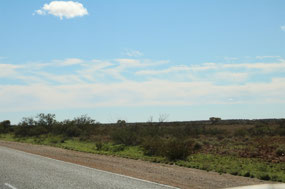
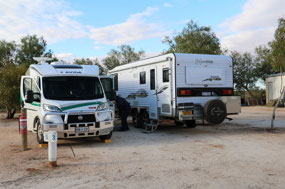
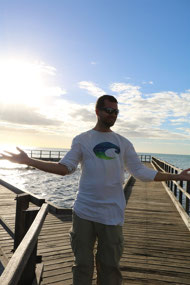

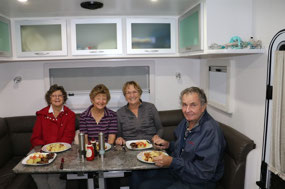
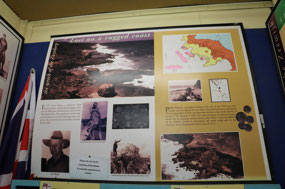

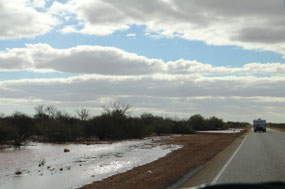

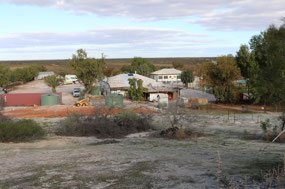

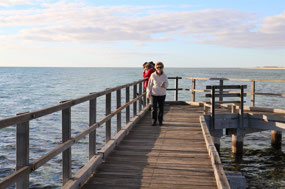
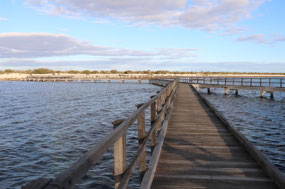
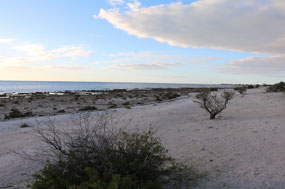
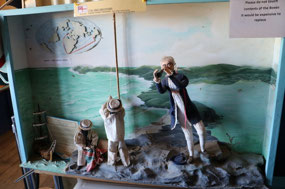
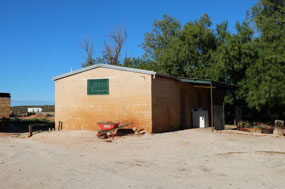
Jenny
2018-06-23
It was nice to finally get some rain, now we need more. The Tom Pepper story would have taken on a different perspective knowing now that he's related to Ernie Dingo. As for the stromatolites, yep, knew they were ancient, but really aren't all rocks!? Ooops to the Colorado guy who spent big bucks to tick his bucket list! The Hamelin Station Stay was a great stop too.
Julie
2018-06-23
Yes Hamelin Pool and the stromatolites the most ancient fossils in the world and being the largest colony is amazing for our history - right on our doorstep, amazing. We were there last year and very impressed with the way they have presented this piece of history.
pamandpete
2018-06-23
Some people are just more into such things as 'Stromatolites' than me, but it was good to go for another look and to blog about them, seeing they are some of the best in the world! Six years ago we went there and I walked out on my own, as Peter was on crutches. Now he can say he has ticked it off his bucket list. Well that is, if it was there!
pamandpete
2018-06-23
You are right Julie. They are on our doorstep and it is amazing that they grow as they do. One does have to go for a look.
Heather
2018-06-23
Good to travel north this morning before we head south. You are obviously well past Carnarvon now and look forward to reading more of your travels.